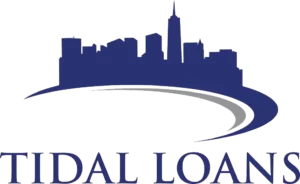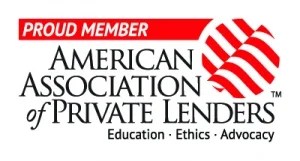Can a property’s cash flow really be all you need to secure a loan for your next investment?
The DSCR loan program, also known as the debt service coverage ratio loan, is for real estate investors. It’s different from regular loans because it doesn’t require personal income proof. Instead, it looks at the property’s cash flow through the debt service coverage ratio (DSCR).
A good DSCR ratio is usually 1 or more. But, some lenders, like Tidal Loans, are more flexible. They accept ratios as low as 0.75. This makes the DSCR loan great for buying or refinancing homes, apartments, or commercial buildings. For more details, check out the DSCR loan program offered by Tidal.
Key Takeaways
- The DSCR loan program focuses on a property’s cash flow rather than the borrower’s personal income.
- DSCR loans typically require a good DSCR ratio of 1.0 or higher for approval.
- These loans are designed for income-generating properties, such as single-family homes and multi-unit structures.
- Down payments typically range from 15% to 20%, depending on the lender’s requirements.
- The emphasis on property cash flow makes DSCR loans a suitable alternative to traditional financing options.
Introduction to DSCR Loan Program
Understanding what is DSCR loan program is key for real estate investors. This financing focuses on the property’s rental income, not personal income. It offers a unique chance for investors to grow their portfolios.
The DSCR loan program looks at a borrower’s ability to pay monthly loan payments. It uses the property’s cash flow. This makes it different from other loans.
The Debt Service Coverage Ratio (DSCR) is a key part of this program. It compares rental income to expenses. A DSCR above 1.0 means the property can pay for itself, making it a good loan candidate.
DSCR loans don’t need W2 income or DTI ratio checks. This makes them a great option for many investors.
“It seems many real estate investors are turning towards DSCR loans due to their flexibility and advantageous terms.”
From 2018 to early 2023, DSCR loans were nearly half of non-QM loans rated by S&P Global. This shows their growing importance. Non-QM loans, including DSCR, offer alternative income checks. This is great for investors who don’t fit traditional lending rules.
DSCR loans are versatile. They work for Single Family Residences, multifamily properties, and rural areas. This makes them appealing to investors looking at different real estate types. They also offer fixed-rate, thirty-year terms for steady payments.
For example, a property with $50,000 in rental income and $40,000 in debt has a DSCR of 1.25. This means it earns 25% more than needed for loan repayments. Improving DSCR can be done by boosting rental income or property value. This makes the property more attractive for loans.
The DSCR loan program focuses on the property’s income potential. This helps investors grow their portfolios efficiently. With over $500,000,000 funded in the last two years, it’s clear DSCR loans are key for smart investors.
What is DSCR?
The Debt Service Coverage Ratio (DSCR) is a key financial tool for commercial property loans. It looks at a property’s rental income and debt payments. This helps lenders manage risks in commercial real estate loans.
Definition of DSCR
DSCR means Debt Service Coverage Ratio. It shows how much cash flow a property has to pay off its debt each year. A DSCR of 1.00 means the property just covers its debt costs.
If the DSCR is below 1.00, the property doesn’t make enough money to pay its debt. This is a sign of financial trouble.
Importance of DSCR in Investment Financing
DSCR is very important for investment financing. A high DSCR shows a property is financially stable and well-run. This makes it easier for investors to get loans.
For example, if a property makes $120,000 in net income and has $100,000 in debt, its DSCR is 1.2. This shows it can handle its debt easily.
A DSCR of 0.95 means the property only covers 95% of its debt payments. This is a warning sign. But, a DSCR of 2.00 or more is very strong. It makes lenders more confident and may offer better loan terms.
How DSCR Loan Program Works
The DSCR (Debt Service Coverage Ratio) Loan Program is a special way to get commercial property loans. It’s different from usual loans. Knowing how it works is key for those interested in this unique financing.
Qualifying for a DSCR Loan
To get a DSCR loan, lenders check a few important things:
- A minimum DSCR ratio, usually 1.2 or higher, shows the property makes more money than it owes.
- The borrower’s credit score must be at least 680.
- Loans start at $175,000.
- Down payments range from 15% to 25% of the property’s price.
- Three to six months of cash reserves are needed.
- Loan-to-Value (LTV) ratios are capped at 80%, showing the max loan as a percentage of the property’s value.
DSCR loans focus on the property’s cash flow. This makes them great for those who own multiple properties or don’t fit traditional lending standards.
DSCR Ratio and Its Calculation
The DSCR calculation is key to getting a DSCR loan. It compares the property’s yearly rental income to its yearly mortgage debt. Here’s how it works:
DSCR = Annual Gross Rental Income / Annual Mortgage Debt
For example, if a property makes $120,000 a year and owes $100,000, the DSCR is 1.2. Lenders want a DSCR of 1.2 or more. This ensures the property’s income covers its debt, with some extra.
DSCR loans look at the property’s income, not the borrower’s job or income. This makes them a good choice for investors in commercial properties.
What is DSCR Loan Program?
The DSCR loan program is a special financing option for real estate investors. It’s different from other non-QM loans because it looks at the property’s income potential, not the borrower’s income. This makes it great for those wanting to grow their portfolio without the usual income checks.
Overview of the DSCR Loan Program
DSCR loans use rental income to qualify for financing. They offer loans from $2 million to $5 million, with a 20% down payment needed. Lenders want a DSCR of 1.25 to 1.5, meaning the property’s income must cover the loan by 120-150%.
DSCR loans have higher loan-to-value ratios, from 75% to 80%. This means more of the property’s value can be financed. They also have faster approval and more flexible rules, appealing to seasoned investors.
Benefits of Using DSCR Loans
DSCR loans are flexible and focus on the investor. Here are some key benefits:
- Flexible Income Verification: DSCR loans look at rental income, not personal income. This is good for investors with variable income or business expenses.
- Streamlined Approval Process: The approval process is quick, helping investors grab opportunities fast.
- Maximized Rental Income: DSCR loans use the property’s income to qualify for bigger loans, helping investors grow their portfolios.
- Investor Cash Flow Loans: These loans help investors manage more properties without using up their personal money.
Even with higher interest rates, DSCR loans offer big benefits for smart investors. There might be pre-payment penalties and cash reserve needs, but these usually fit well with the plans of experienced investors.
In summary, the DSCR loan program is a key tool for real estate investors looking to grow their portfolios efficiently and keep their finances strong.
Advantages of DSCR Loans
DSCR loans offer unique benefits for those looking into non-traditional lending. They are based on property cash flow, not personal income. This is a big plus for self-employed people or those with complex income sources.
These loans let investors use their properties more effectively. They can get financing up to 80% of the property’s value. Plus, they can get cash out for more investments. Although, you’ll need a 20-25% down payment, which means you own more of the property.
Applying for a DSCR loan is fast because you don’t need to show your income. This is great for quickly grabbing investment chances. Also, these loans work for properties that regular loans won’t cover, like condos and multi-unit buildings.
Yes, the interest rates are a bit higher, about 7.7%. But for serious investors, the benefits are worth it. They can borrow for many properties without the hassle of proving income.
In short, DSCR loans are a strong option for both new and experienced investors. They make it easier and more efficient to grow your property investments.
Property Types Eligible for DSCR Loans
DSCR loans are great because they work with many property types. They’re perfect for real estate investors. These loans can go up to 80% of the property’s value, with amounts from $1 million to $5 million. Often, the limit is $3 million.
Single-family homes, condos, and townhomes are all good choices. Even multi-family properties with up to 10 units are eligible. This gives investors many options.
Commercial spaces and some rural properties can also get DSCR loans. You need a good credit score, usually 660 or higher. Down payments are 20% to 25% of the purchase price.
DSCR loans work for both long-term rentals and short-term vacation rentals. This makes them great for investors who want to make more money. Lenders check if the property’s income can cover debt and unexpected costs. There’s no limit on how many properties you can finance, helping you grow your portfolio.
In short, DSCR loans are for a wide range of properties. This includes single-family homes, multi-family units, and commercial spaces. They offer a lot of flexibility and chances for good investment returns.
DSCR Loans vs. Traditional Loans
When looking at the *DSCR loan program* and traditional loans, investors see a big difference. *Commercial property loans* under the DSCR program focus on the property’s cash flow, not the borrower’s income. This is great for investors with big write-offs that lower their taxable income.
Key Differences
Knowing the main differences between *DSCR vs. traditional loans* helps investors choose wisely:
- DSCR loans are for rental properties and commercial real estate, while traditional loans are for homes.
- DSCR loans have easier qualifying and often allow for bigger loan amounts (up to $5 million).
- Traditional loans need a bigger down payment and take longer to qualify. They also require proof of steady income and job history.
- DSCR loans have higher interest rates but close faster than conventional loans.
- DSCR loans check if the property’s rental income covers its debt, aiming for a DSCR of 1.25 or more. Traditional loans look at the borrower’s overall finances.
When to Choose DSCR Loans Over Traditional Loans
Deciding between DSCR and traditional loans depends on your situation and goals. Here’s when to pick a DSCR loan program:
- You’re an investor with many properties, wanting easier underwriting.
- Your main income is from rental properties, making it hard to prove income.
- You want a quick loan closing to grab investment chances fast.
- You need a loan that doesn’t limit how many properties you can finance.
The *DSCR loan program* offers flexibility and speed for investors in *commercial property loans*. It lets them use their property’s cash flow instead of their personal income.
DSCR Loan Requirements
Getting a DSCR loan means you need to meet certain criteria. The property must make enough money to pay for the mortgage and other costs. This guide helps investors understand what’s needed.
- DSCR Ratio: Lenders usually want a DSCR ratio of 1.2 to 1.5. This shows the property’s income can handle its debt.
- Credit Score: You’ll need a FICO score of at least 660. Some lenders might accept scores as low as 620, based on your situation.
The Loan-To-Value (LTV) ratio is also important. Lenders often prefer an LTV of 80% or less. This affects how much you can borrow. For example, loan amounts can range from $175,000 to $5 million with certain lenders.
Down payments for DSCR loans vary from 10% to 30% of the property’s price. This depends on the lender, the property type, and the loan amount. Higher down payments, usually 20-25%, might be needed for bigger loans. This can be a challenge for investors with less money.
DSCR loans have special benefits, especially for those looking at non-QM loans. They offer quick approval and don’t require a lot of income proof. This is great for self-employed people or those with many properties.
- Most lenders want a minimum credit score of 660.
- DSCR ratios should be between 1.2 and 1.5.
- Loan amounts can go up to $5 million with some lenders.
- DSCR loans can be used for different property types, like commercial real estate, single-family homes, and multifamily properties.
DSCR loans are flexible, making them good for investors. They help when traditional loans are not available due to income or credit issues. Using these loans can help diversify your investments and use the property’s income to get more financing.
“Many rental real estate investors opt for DSCR loans due to income limitations in traditional mortgages,” a recent industry report highlighted.
Tidal Loans LLC’s DSCR Loan Offerings
At Tidal Loans LLC, we help real estate investors find the right financing. Our DSCR mortgage program is made for different investment plans. This ensures clients understand their options well. Our DSCR mortgage program uses the property’s income to make loans more accessible and beneficial.
The debt service coverage ratio loan is key in checking a property’s financial health. It’s found by dividing the property’s net operating income (NOI) by its total debt service. A ratio above 1 means the property makes money. Tidal Loans LLC requires a minimum DSCR of 0.75, but higher ratios can get you better deals.
We know flexibility is important. So, our DSCR loans cover single-family homes, 2-4 unit dwellings, multifamily properties, and commercial ones. Investors can also find other financial products, like fix-and-flip loans covering up to 100% of costs, or new construction loans for up to 70% of the property’s value after construction.
In Arlington, real estate investment is booming. The median property value has gone up by 12.1% from 2020 to 2021. Despite a small population drop, the area’s economy is strong. Our DSCR mortgage program supports property investments in these changing markets.
Tidal Loans LLC focuses on personalized solutions. We carefully look at each client’s financial situation and goals. This helps us find the right loan for them. Whether you want to refinance or buy a new property, our DSCR mortgage program is here for you.
Ready to explore your options? Contact Tidal Loans LLC today at 832-757-1262 or email us at info@tidalloans.com. We’ll guide you through the world of debt service coverage ratio loans and help you succeed in real estate.
Conclusion
The DSCR mortgage program changes how we finance investments. It focuses on the property’s income, not the borrower’s. This makes it great for real estate investors looking to grow their portfolios.
This loan offers high leverage and easier underwriting. It’s perfect for those who value property performance over personal income checks.
To understand DSCR loans, knowing how to calculate the DSCR is key. A DSCR of 1.2 means there’s 20% extra income to cover debt. This shows lenders the property is financially stable.
Even with higher interest rates, DSCR loans are flexible. They let you pay off the loan faster if the property does well. But, finding lenders for DSCR loans can be tough. This might limit your options for good rates and terms.
In summary, the DSCR loan program is a strong tool for real estate investors. It allows for more leverage and easier processes. This helps investors reach their property and revenue goals better.
Understanding the property’s cash flow and DSCR is essential. By using the DSCR loan program wisely, investors can make better financial decisions. This leads to more success in investment financing.


